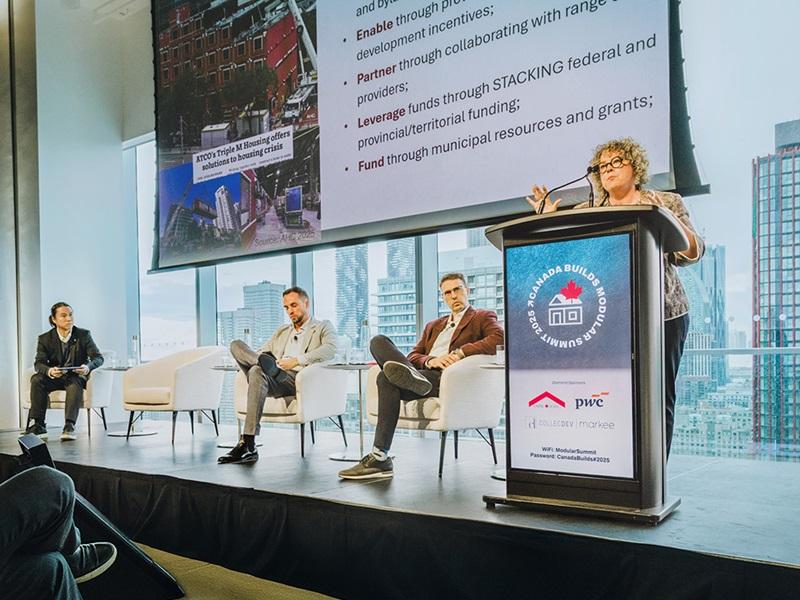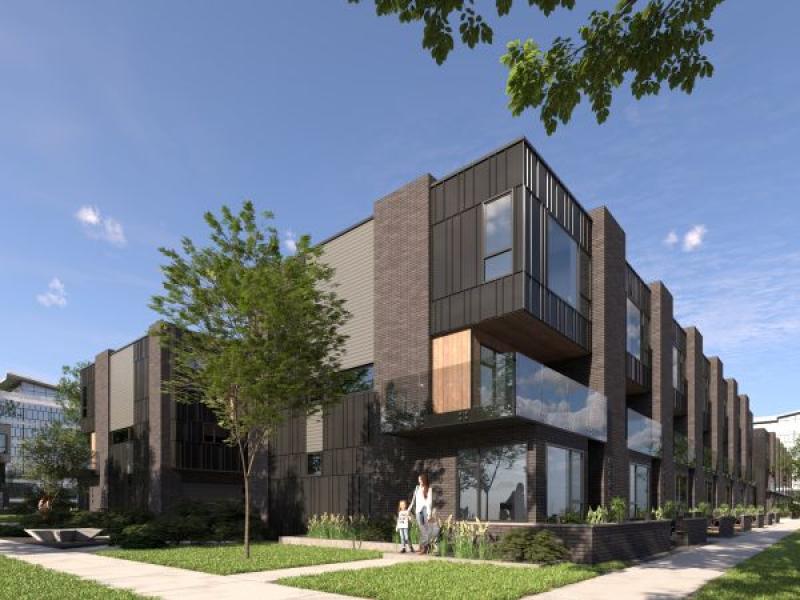
Equitable Bank’s new Laneway House Mortgage is designed to help homeowners introduce more secondary suites to Canadian cities, and promote further densification of urban areas.
Launched in August, the mortgage will assist eligible homeowners in funding the construction of a laneway house on their property. This, its backers believe, will encourage the production of more rental housing, increase housing supply and provide additional income streams for homeowners and investors.
Equitable is among the first banks in Canada to offer such a mortgage, Mahima Poddar, Equitable’s group head of personal banking, told RENX Homes in an interview. (Royal Bank of Canada offers an enhanced residential construction mortgage program, also for the construction of laneway homes.)
“This need for secondary suites in Canada, just given the critical housing shortages, this is going to continue to be an issue in Canada, so we need to continue to find and support solutions like laneway housing and garden suites,” Poddar told RENX Homes.
Currently offered in the Toronto, Vancouver and Calgary areas, it may be expanded to more cities, she said.
Toronto-headquartered Equitable is the seventh-largest Canadian bank with $125 billion in assets under management and administration. It holds $20 billion in uninsured single-family residential mortgages, and offers products for under-served markets such as reverse mortgages and mortgages geared for self-employed individuals.
The Laneway House Mortgage
Also known as garden suites, a laneway house is a detached, smaller housing unit in a backyard that connects to a public laneway. Such housing has caught on in recent years as a tool to increase Canada’s housing supply and counter high costs.
The mortgage is offered for properties that are unencumbered, or where Equitable Bank holds or will hold a first mortgage.
Up to 75 per cent of the completed value of the project or 80 per cent of the budget will be covered by Equitable, with pricing at a rate of prime plus two per cent at an open term of one year. A minimum loan is $200,000, with payments on the interest only.
Poddar said the Laneway House Mortgage was launched because of the “shortage of appropriate housing in Canada.” With new municipal programs to increase density, it would be a “great way” to meet the goal by helping homeowners get easy financing for construction, she added.
Without such a product, owners would be out of pocket for this type of project, at an average cost of $300,000 to $600,000, she said. Alternatively, they could apply for a home equity line of credit, but that requires significant equity in the home, Poddar explained.
Equitable has a particular interest in supporting increased residential density in Canada’s largest cities. Poddar described it as Equitable’s “social responsibility” to achieve this.
Offering the mortgage in Toronto, Vancouver and Calgary isn't just due to their size, but because the cities offer programs and permitting to encourage the development of this housing type.
Uses for a laneway home
A laneway home meets the changing family dynamics in Canada with rising numbers of multigenerational homes, Poddar said. Elderly parents or young couples can live in the secondary dwelling, for example.
Another benefit for homeowners and investors is to make rental income or boost the value of their property. This was another key driver for Equitable’s interest in the mortgage, as the bank received feedback from borrowers who struggled to keep up with their payments during the COVID pandemic and sought solutions, Poddar said.
Laneway structures can also be utilized as an office space or an art studio, she said.
Equitable does not expect an immediate significant uptake for the Laneway House Mortgage, Poddar said, but of those who do apply it expects a “considerable” proportion to be clients who will use the funding to construct a rental property.










